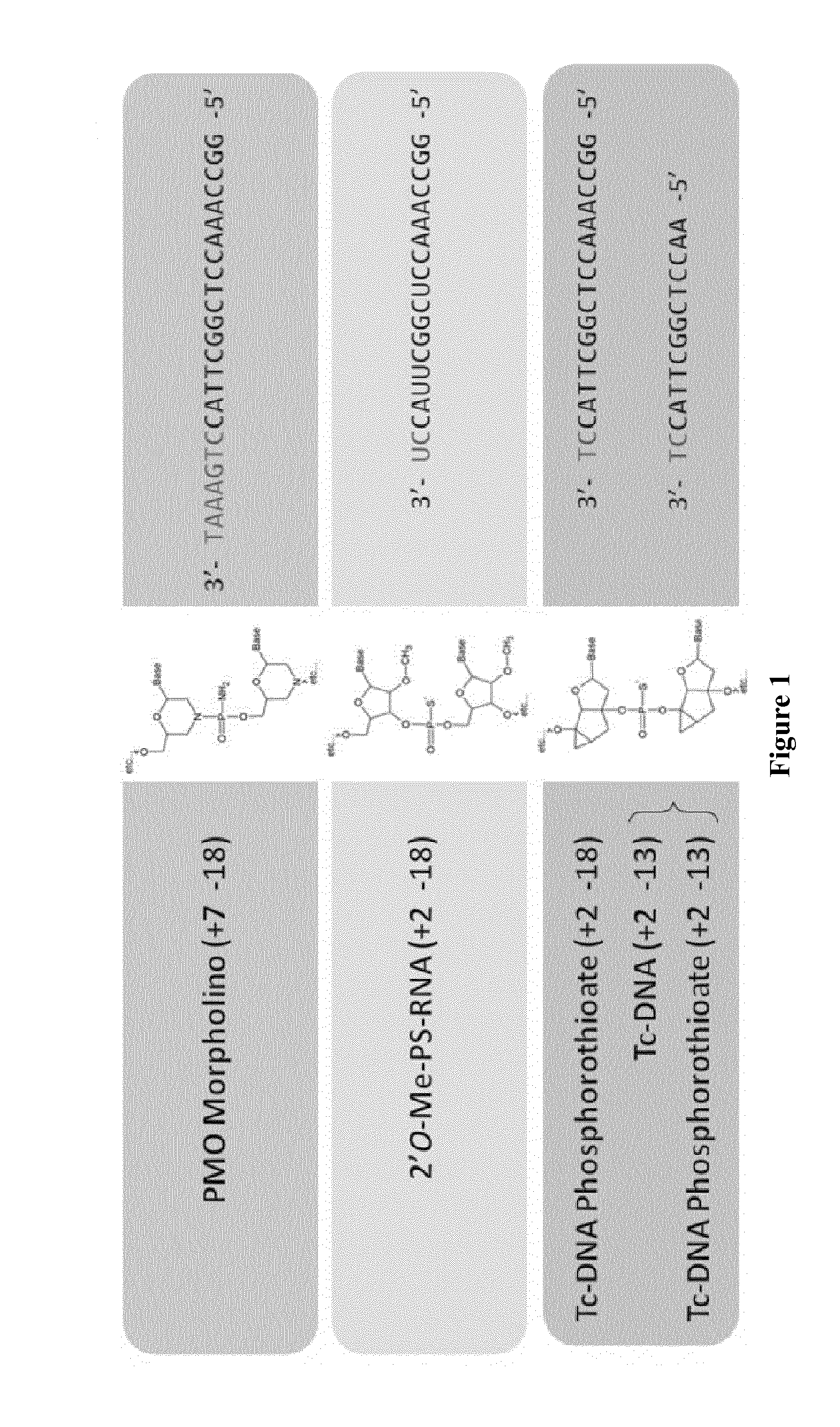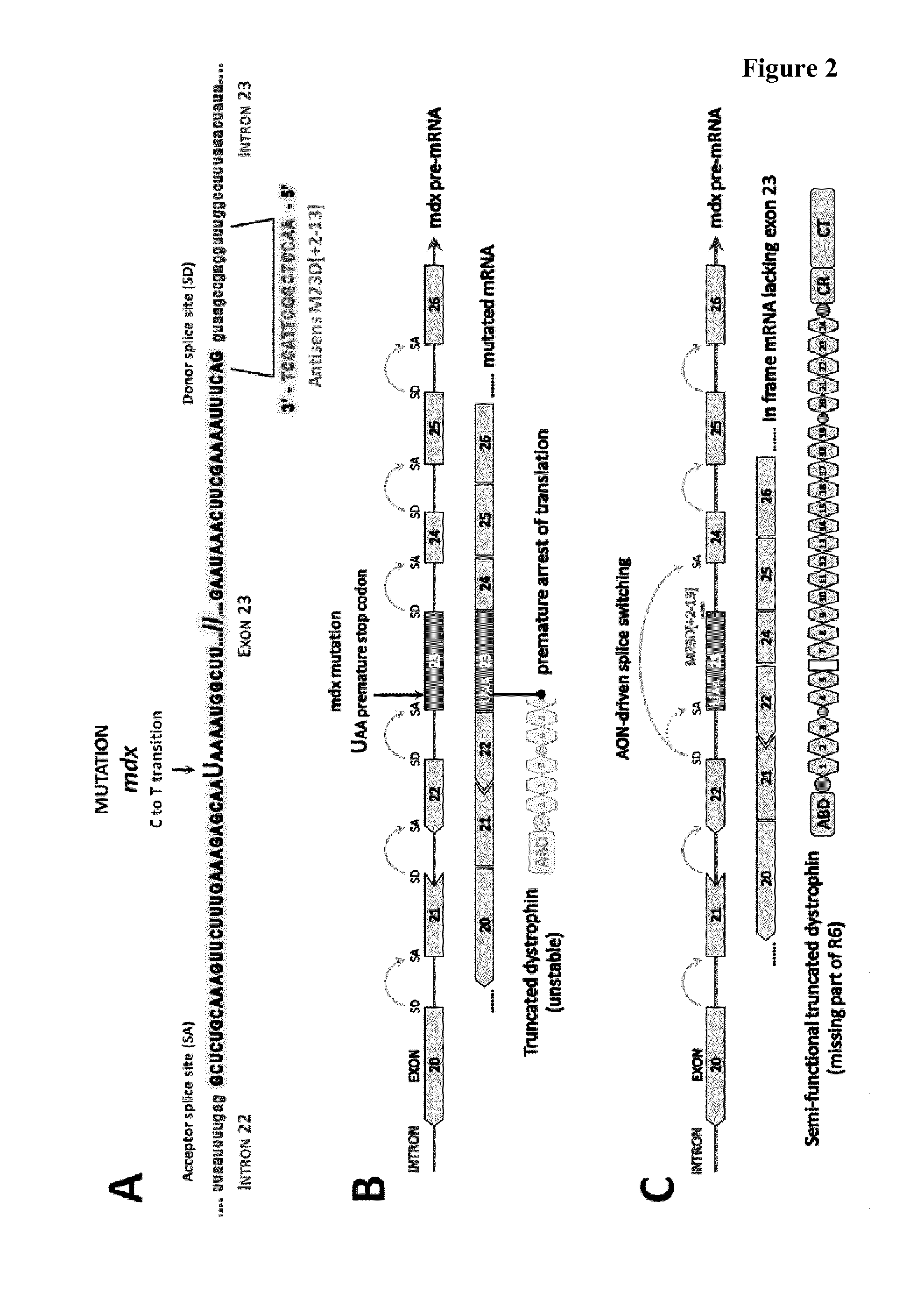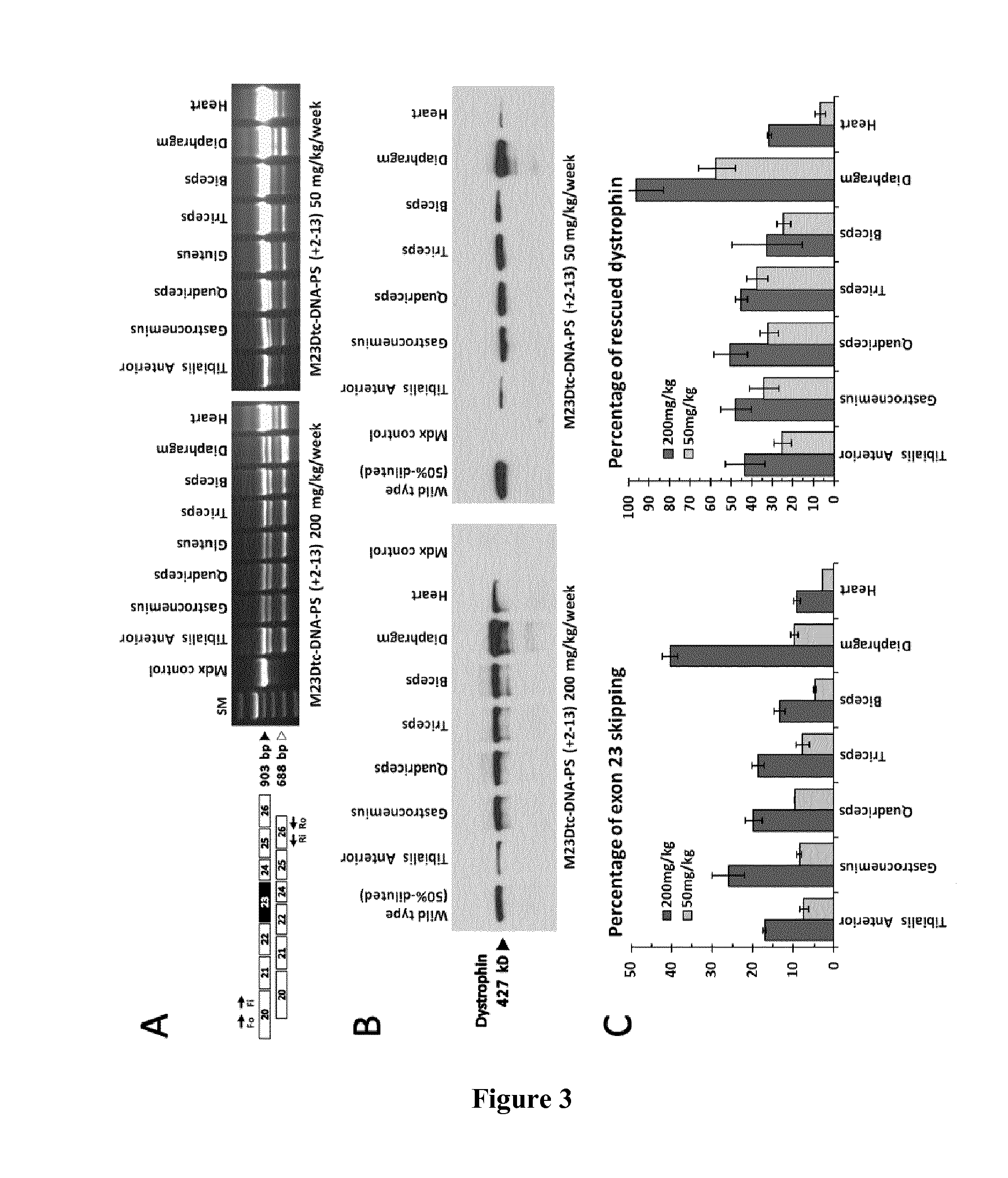Tricyclo-phosphorothioate DNA
a phosphorothioate and tricyclophosphorothioate technology, applied in the field of nucleic acid molecules, can solve the problems of provoking general damage to muscle tissue, affecting the activity of cardiac cells, and affecting the performance of cardiac cells, and achieves the effect of high activity in cardiac cells and high penetration efficiency
- Summary
- Abstract
- Description
- Claims
- Application Information
AI Technical Summary
Benefits of technology
Problems solved by technology
Method used
Image
Examples
example 1
In Vivo Evaluation of Tc-DNA-PS Antisense Oligonucleotides for the Treatment of a Dystrophin-Mediated Muscular Dystrophy
[0130]Adult mdx mice were treated systemically for 12 weeks by using subcutaneous and / or intravenous injections of tc-DNA-PS M23D (+2-13) oligomer at either 200 or 50 mg / kg of body weight per week. Two weeks after the last injection, muscles were harvested and RNA samples were analyzed by nested RT-PCR with primers in exons 20 and 26 of the dystrophin gene. FIG. 3A shows the detection of exon 23-skipped dystrophin mRNA in a number of skeletal muscles from treated animals. The 903-bp band corresponds to the unskipped dystrophin mRNA enclosing the mdx non-sense mutation, while the shorter 688-bp fragment corresponds to the exon 23-skipped mRNA. It is remarkable that systemic treatment with the phosphorothioate-containing oligomer induces significant rescue of the dystrophin mRNA in various skeletal muscles (i.e. tibialis anterior, gastrocnemius, quadriceps, gluteus, ...
example 2
Effect of the Delivery of a Tc-DNA-PS (ISS7) Targeting Exon 7 of SMN2
[0133]The SMA mouse model (FVB.Cg-Tg(SMN2)2Hung Smn1tm1Hung / J) was used. SMA Type III mice (FVB.Cg-Tg(SMN2)2Hung Smn1tm1Hung / J) are knock out for Smn (Smn1 − / −) and contain a SMN2 transgene made of two tandem copies of the human SMN2 gene. These animals display typical features including necrosis of the tail starting at about one month of age. Such a necrosis progressively extends to the pinnae of the ears and feet and late in life these animals present with muscle weakness. The photograph in FIG. 15 shows 3 type III individuals (one month old). The upper one is the untreated control; the two others were treated with tc-DNA-PS (ISS7): they received a single injection ICV (intracerebroventricular) at birth (5 μl containing 20 μg of tc-DNA-PS (ISS7)) and repeated SC (subcutaneous) injections once a week at a dose of 200 mg / kg.
[0134]We conclude that tc-DNA-PS oligomers represent a possible drug candidate for SMA thera...
example 3
Evaluation of Tc-DNA and Tc-DNA-PS for DM1
[0135]DM1 myoblasts with 800 CTG repeats were transfected with increasing concentration of tc-DNA-CAG7 (SEQ ID NO: 11). After 3 days in culture, expression of both normal and mutant CUGexp-DMPK (dystrophia myotonica-protein kinase) mRNAs was analyzed by Northern blot. The ratio of mutant CUGexp-DMPK vs. normal DMPK mRNAs was quantified. A dose dependent decrease of the mutant CUGexp-DMPK mRNA without hanging of the normal DMPK mRNA showed that the treatment with the oligonucleotide results in the specific destruction of mutant CUGexp-DMPK (see FIG. 16)
[0136]In another experiment, DM1 myoblasts with expanded CTG (>800 CTG) were transfected with 10 μg of tc-DNA-PS-CAG7. After 3 days in culture, expression of normal and mutant CUGexp-DMPK mRNAs was analyzed by Northern blot. The ratio of mutant CUGexp-DMPK vs. normal DMPK mRNAs was quantified (FIG. 17 upper lane). The nuclear aggregates of CUG expanded RNAs (foci) were detected by FISH and the ...
PUM
| Property | Measurement | Unit |
|---|---|---|
| Composition | aaaaa | aaaaa |
Abstract
Description
Claims
Application Information
 Login to View More
Login to View More - R&D
- Intellectual Property
- Life Sciences
- Materials
- Tech Scout
- Unparalleled Data Quality
- Higher Quality Content
- 60% Fewer Hallucinations
Browse by: Latest US Patents, China's latest patents, Technical Efficacy Thesaurus, Application Domain, Technology Topic, Popular Technical Reports.
© 2025 PatSnap. All rights reserved.Legal|Privacy policy|Modern Slavery Act Transparency Statement|Sitemap|About US| Contact US: help@patsnap.com



